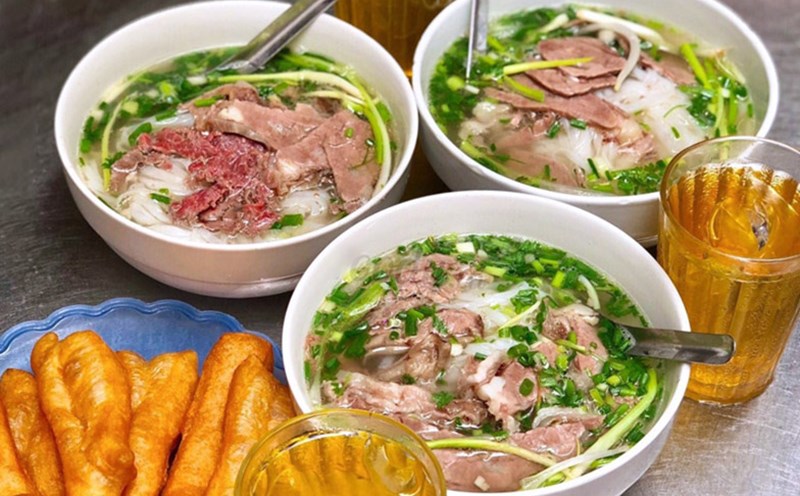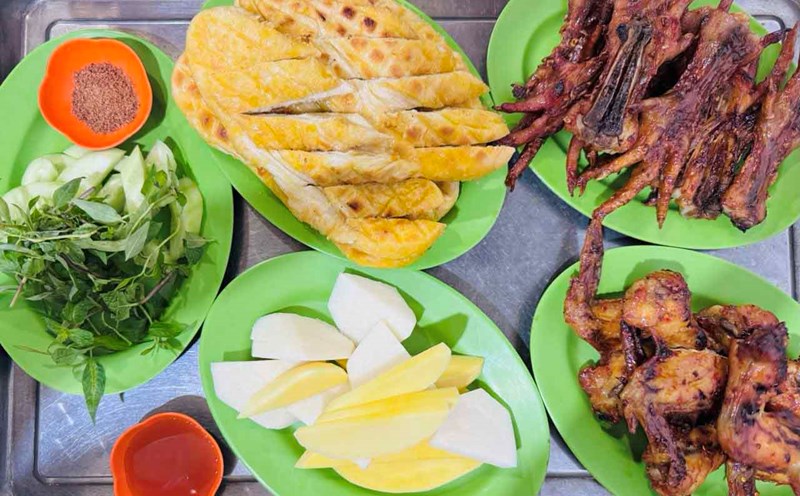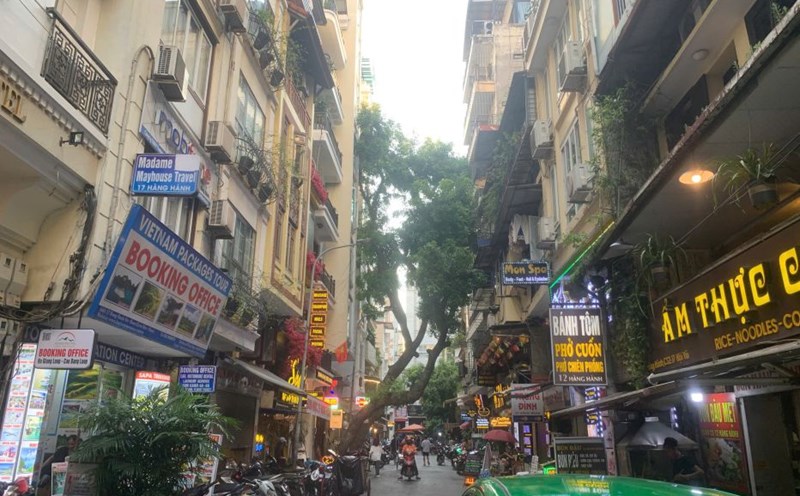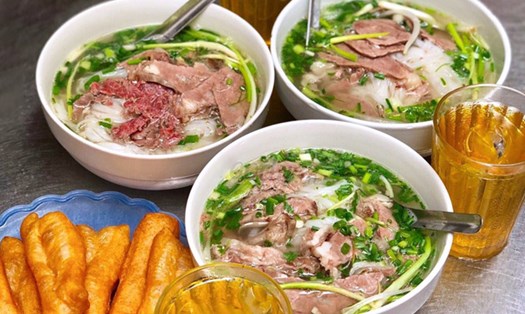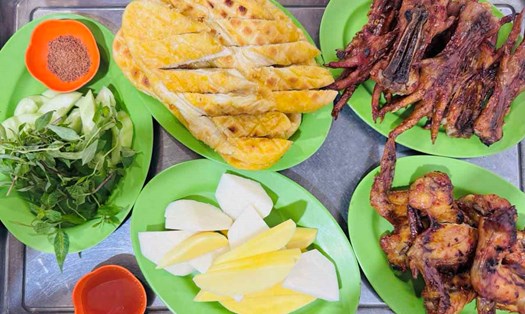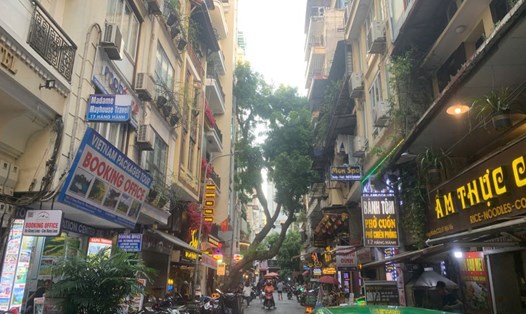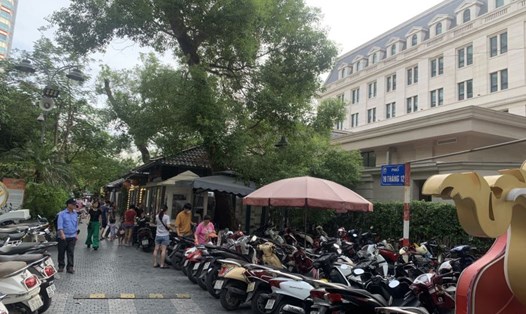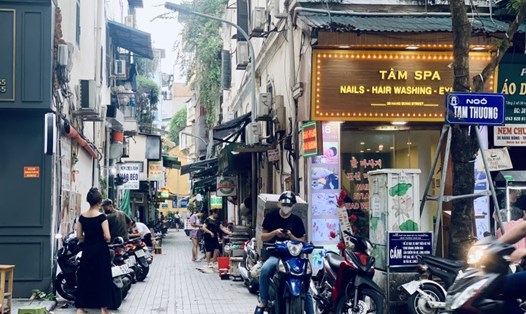Administratively, Hang Bot alley starts from house number 36 Ton Duc Thang street (previously named Hang Bot street in July 1988) to Phan Phu Tien street, to the back of Hang Day Stadium, in O Cho Dua ward, about 200m long.
Hang Bot, also located in the Hang Street - Hang Alley system of Hanoi area, 36 streets. The flour is ground from rice and grains to eat or make vermicelli, noodles, vermicelli, rice paper... which is a typical product of people living in the two villages of Thuc Mien (specializing in making cooked flour) and Huong Mien (specializing in making fragrant flour), all of which are in this area.
It is easy to understand why Hang Bot alley is located next to Hang Chao alley to complete the saying "If you don't have a pot of potholes, you should eat it", because the lake here is also congested but has the effect of being used for glue, to glue instead of for eating. When there was still Hang Bot street, many food stores and food stores chose this as their location.
In return, right in Hang Bot alley and at the end of Hang Bot alley are two famous noodle shops for athletes and workers. They are the hang mi Chinh in the middle of the alley (now changed to so 7 hang mi Chao) and the hang mi at the end of the alley. The common feature of the two restaurants is that they have been selling beef noodles, heart, and crust for decades.
Traditional shrimp paste 2 shrimp is made with cardboard and cooked with beef, pork heart, pork skin and broccoli to create a calorie-rich breakfast dish for athletes who have just finished their morning practice at Hang Day Stadium or students, civil servants, and workers in the morning.
The bowl of sour, spicy, and noisy noodles of these two noodles has added to the "starchy" nature of the old Hang Bot street and now the Hang Bot alley. Indeed, under a famous name, there cannot be mediocre people.
But Hang Bot alley is not only proud of its starches or bowls of hearty noodles. This alley is located next to Thong Phong alley, where the first issue of Lao Dong Newspaper was published on August 14, 1929.
Therefore, places such as Thong Phong, Hang Bot, Hang Non, Hang Bo have become "red" addresses of Lao Dong Newspaper, a newspaper of the working class and laborers of Vietnam, approaching its 100th anniversary.
Not only is it closely related to the birth event of a major official newspaper in the village of Vietnamese Revolutionary Press, as stated at the beginning of the article, Hang Bot Alley is the link of many important cultural, historical and spiritual addresses of Hanoi.
First is the Temple of Literature - Quoc Tu Giam area, the first university in our country, established under the reign of Ly Thanh Tong, in the year Canh Tuat (1070). Initially, this was a place for learning for the princes and children of the royal family and the royal court. During the Tran Dynasty, the Temple of Literature expanded to become a university for the talented in the world.
Standing at the end of Hang Bot alley, looking to the side of the road, you can immediately see the solemn brick wall of the Temple of Literature and the roofs of Thai Hoc area hidden in the overgrown treetops, green all year round. The Temple of Literature is a symbol of Vietnamese culture, with the Temple of Literature symbolized as the capital Hanoi.
The area around Van Mieu is definitely a famous grape forest. The names of the most talented students in Thang Long - Hanoi all appear around here, Doan Thi Diem, Dang Tran Con, Phan Phu Tien... These names have made the land of studying and literature famous.
Singer Doan Thi Diem - author of the masterpiece Chinh Phu Nam - is closely associated with Bich Cau Dao Quan, a spiritual victory near Hang Bot alley. According to historical records, the Tao Quan bulldozhan was built during the time of the Saint Tong Dynasty (15th century) - a place for Taoists to practice medicine and worship their fairy tales.
The story of "Bich Cau Ky Ngoc Ky" by Doan Thi Diem recorded that during the reign of King Le Thanh Tong (1442 - 1479), there was a poor poor poor man named Tran Tu Uyen who built a temporary tent by the water well in Bich Cau ward as a place to eat and study. One day when he went to see a fairy tale at Ngoc Ho Pagoda, he met a fairy goddess Giang Kieu, then got married and later became a fairy.
Bich Cau Quang quan is an invaluable cultural heritage. This is a work that contributes to preserving the unique religious and artistic values of the nation. In addition, Taoism also clearly reflects the influence of Taoism in the lives of ancient Vietnamese people.
Another very famous location connected to Hang Bot alley is Hang Day Stadium, the capital's football temple, with countless street legends originating from here, demonstrating the extremely strong football fan spirit of Hanoians.
It is no coincidence that Hang Day Stadium was built here. There is an quite interesting conclusion that many Hanoiese bridge-roofers have the origin of being boyfriends or boyfriends on Hang Bot Street.
According to the book "Hang Bot Street, the story of the mountain range that I miss" published in 2024 by former football star Ho Cong Thiet (1952-2023) of the Hanoi Police Team, the first famous and famous player of Hang Bot Street is Phan Duc Au, who played for the Hoang Dieu Team, then joined the Hanoi Police. As for the B-class player from Hang Bot Street, "many do not say much".
Only the veterans of the alley and Hang Bot street know and tell those stories as a source of pride. However, for generations of football fans in recent decades, Hang Bot Alley has always been a "red" address, because it leads to the 10-13 gates of stand B, which are very unpopular with fans of the away teams.
Therefore, a Hang Bot alley is surrounded by many things to love and remember!

